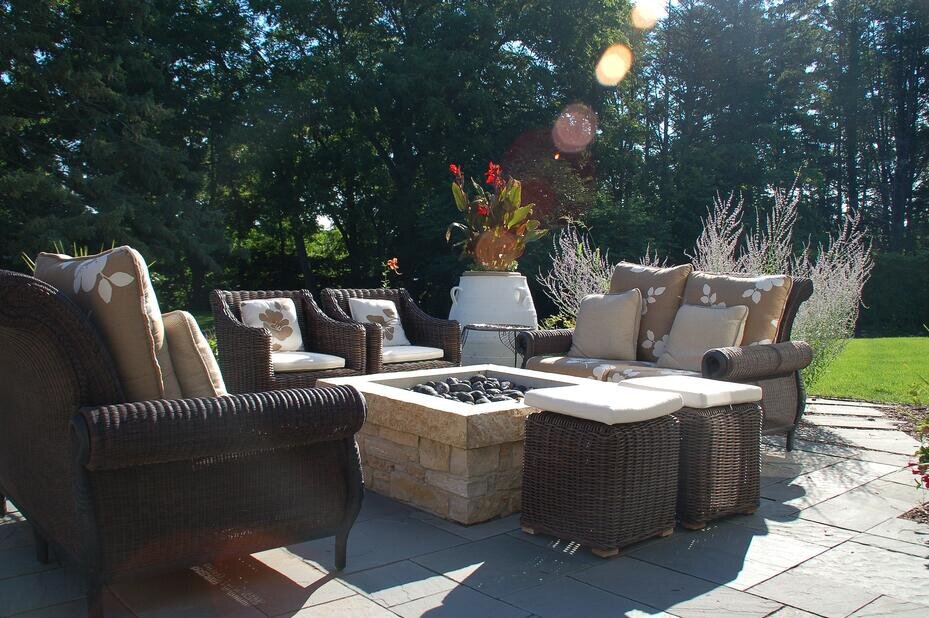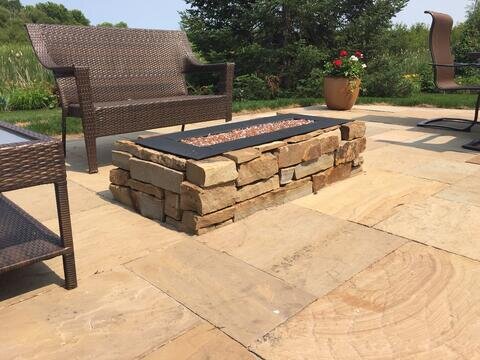Fire pits have been one of the most popular elements in the landscape industry for the last few years. I think this is from the memories many of have of sitting around a fire roasting marshmallows and eating smores. In our yard we have found a fire brings the family together or keeps our teenage kids around with there friends. Fires extend our patio season from earlier in the spring and later into the fall when the temperatures are cooler. A fire pit is a great upgrade to any new patio design, existing patio or as a stand alone element in your yard. What should you consider when adding fire pit?
Space. The size of fire pits varies greatly. Most store bought units are available in a 24 inches to 30 inch size. Built in units often have an exterior dimension of 36 inches to 58 inches. I like to plan for about 5 feet around the fire pit for seating and access. If you plan a seating wall around the patio and fire pit it is suggested to keep the wall 40 to 48 inches away from the fire pit.
Fire pit, outdoor fireplace and brick patio in Madison, WI
Location. It is always recommended to check local building and zoning codes when contructing a fire pit. In general, I recommend keeping the fire pit at least 10 feet away from your house and other flammable items. We install many fire pits as part of a greater patio space. We have also installed many that are off on there own.
Materials. For the casual burner who might have a fire 2-3 times a year, I always recommend a portable fire pit purchased from your favorite retail store. Many of my customers like to burn a fire weekly or multiple times a week. Then a built in fire pit makes sense. Brick paver companies like Unilock make fire pit kits. Accessories include iron cooking grills and covers. As a kid, we dug out a little earth and created a ring using boulders.
Gas or Wood? Gas burning fire pits have become more poplular too. It is very handy after a long day of work to come home and enjoy a fire on the patio simply by turning it on. Gas fire inserts are available in many shapes and patterns. The burner can be covered with a traditional log set or a variety of stones or colored glass.
Height. Height varies. We have built fire pits that are at ground level and some at 24 inches tall. I usually recommend the fire pit be about 15 inches tall. Most chairs are about 18 inches tall. At 15 inches the fire pit is a nice height to put your feet up. Or, you can convert the fire pit easily to a coffee table with a piece of carpentered wood or remant granite.
Fire pits have become more and more popular. They are not only fun in the summer but great on cool times in the spring and fall. For many, fire pits bring back the memories of childhood. For others it they family together. Whatever your reason, please feel free to contact me for help with your new fire pit.














